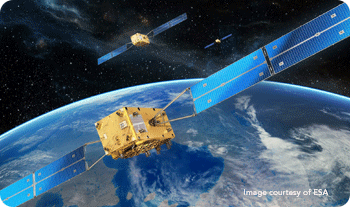Two new satellites join the Galileo Constellation

On 17 December, at 11.51 GMT (12.51 CET, 08.51 local time) Galileo satellites 11 and 12 successfully blasted off from Europe’s Spaceport in French Guiana onboard a Soyuz rocket. With this new launch there are now twelve orbiting satellites of the Galileo satellite navigation system.
Continuing with the phased-in launching of its Full Operational Capability (FOC) satellites, this satellite navigation system developed by the European Commission in collaboration with the European Space Agency (ESA) is due to begin providing navigation services by 2016 with full system capability in place by 2020.
Galileo will eventually have thirty satellites in orbit, providing positioning information with an unprecedented accuracy and reliability. The Galileo signal will also be compatible with those of GPS and GLONASS, the two GNSS systems up and running today.
GMV has played a key part in the GALILEO program right from the word go. It has supplied several key elements for the system’s ground segment such as OSPF (Orbit & Synchronisation Processing Facility), IPF (Integrity Processing Facility), SPF (Service Product Facility), FDF (Flight Dynamics Facility) and MNE (MDDN Network equipment). GMV is also currently the main contractor for providing Galileo’s essential Timing and Geodetic Validation Facility (TGVF) services; it is co-leading development of the European Union’s GNSS Service Centre (GSC) and is leading the development of Galileo’s commercial service (CS) demonstrator.
Galileo infrastructure is confidently expected to make a decisive contribution to the satellite navigation services and application market, which the European GNSS Supervisory Authority (GSA) predicts will reach 135 billion euros by 2025.